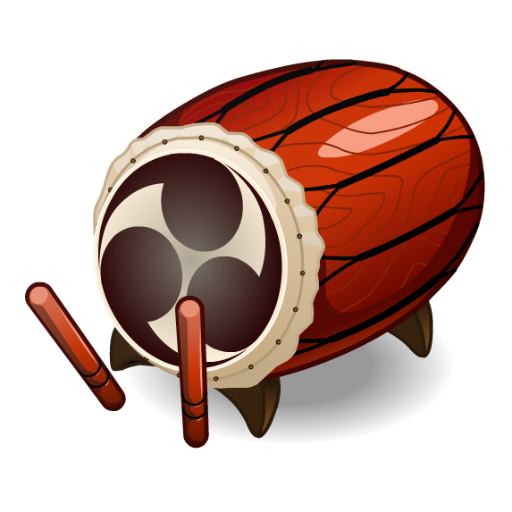Exploring the World of Taiko Drums
Taiko drums represent a diverse family of Japanese percussion instruments. While the term "taiko" (太鼓) broadly encompasses all drums in Japanese, internationally it typically refers to the various Japanese drums known as wadaiko (和太鼓, "Japanese drums") and the ensemble drumming style called kumi-daiko (組太鼓, "set of drums"). The crafting of taiko drums is unique to each maker, with the preparation of both the drum body and drumhead often taking years depending on the techniques employed.
Taiko drums hold a place in Japanese mythology, yet historical records indicate their introduction to Japan via Korean and Chinese cultural exchange as early as the 6th century CE. Interestingly, some taiko share similarities with drums originating from India. Archaeological findings from Japan's Kofun period (also 6th century) further support the existence of taiko during this era. Throughout history, their uses have been remarkably varied, serving purposes as diverse as communication, warfare, theatrical accompaniment, religious rites, festivals, and formal concerts. In contemporary society, taiko drumming has also become a significant element in social activism for minority groups both within and outside Japan.
The kumi-daiko style, distinguished by its ensemble performances featuring various drums, originated in 1951 thanks to the efforts of Daihachi Oguchi and has flourished through groups like Kodo. Other unique styles, such as hachijō-daiko, have also developed within specific Japanese communities. Kumi-daiko ensembles are not limited to Japan; they thrive in the United States, Australia, Canada, Europe, Taiwan, and Brazil. A taiko performance is a multifaceted art form, encompassing intricate rhythmic patterns, precise forms, specific stick techniques, distinct costumes, and carefully selected instrumentation. Performances commonly feature various barrel-shaped nagadō-daiko drums alongside smaller shime-daiko drums. Many groups enhance the drumming with vocals, strings, and woodwind instruments.



























![NighTly Ritual – New Version 2.0 [Okyo]](https://images.51ycg.com/uploads/55/1719595294667ef11ef4096.jpg)




